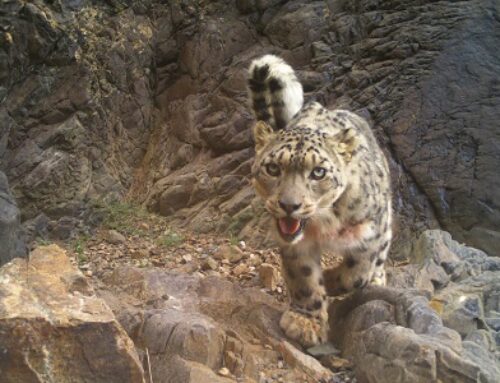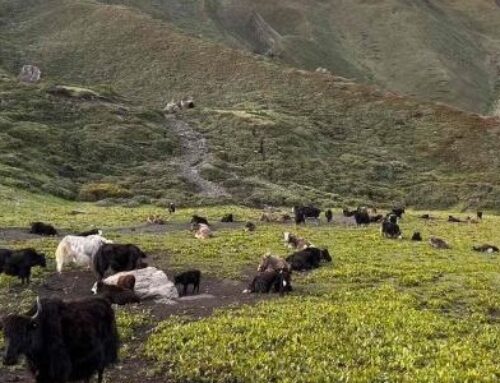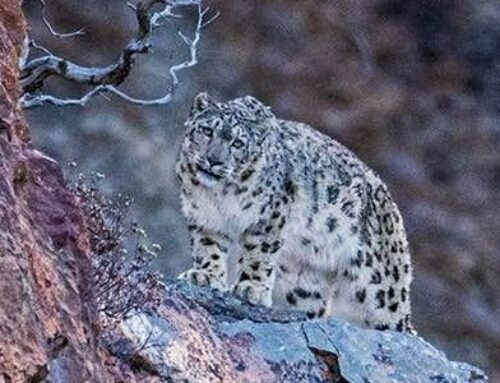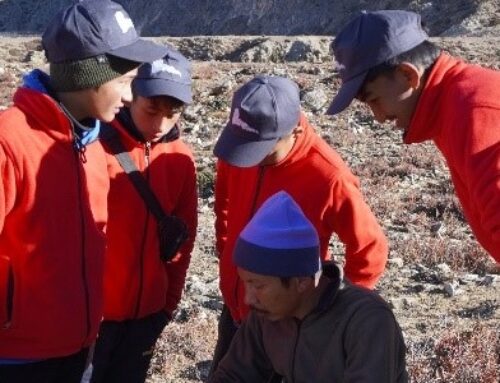
Photo: Claudio Augugliaro
In 2017, a series of studies were undertaken by Conservancy partner Claudio Augugliaro and a team of conservation researchers to assess the conflict between herders and predators like snow leopards and wolves in the Bayan-Ölgii Province of Mongolia.
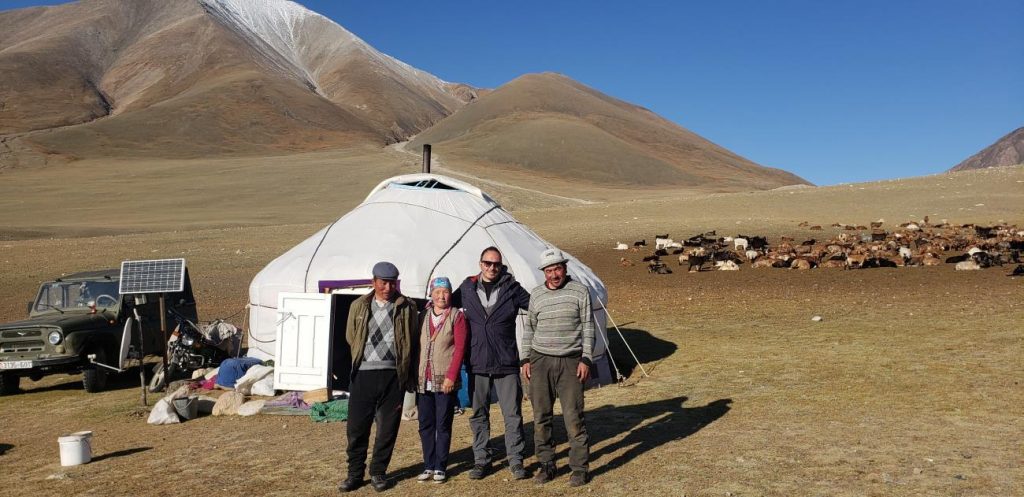
Photo: Claudio Augugliaro
Most of the people that live in this region are nomadic pastoralists, and raising livestock is the main source of their income. Naturally, conflict with predators is a continual concern.
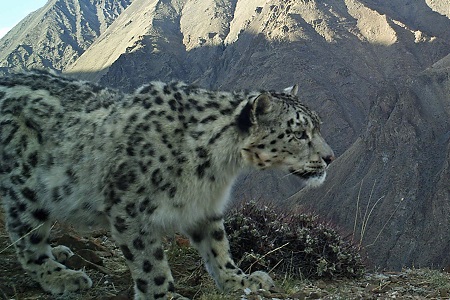
Snow Leopard
Photo: Tsagaan Shuvuut – Irbis Mongolia
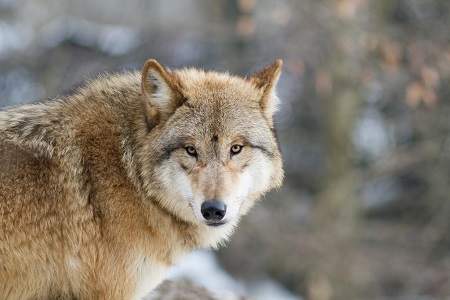
Mongolian Wolf
More than half of the livestock losses recorded during the studies were the result of non-predatory causes like disease and harsh winter weather. But snow leopards and wolves were also found to be responsible for livestock loss, with the majority attributed to wolves. So, the general attitude of the local people toward these predators was an important aspect to assess, including the perceived threat to livestock just by the presence of snow leopards and wolves in the area.
The researchers found that snow leopards were generally thought of in a positive or neutral light. This could be attributed to good educational outreach. It also might reflect the high regard local people have for the snow leopard which is revered as a spiritual symbol. In addition, its presence also provides an economic benefit to the community as a source of ecotourism.
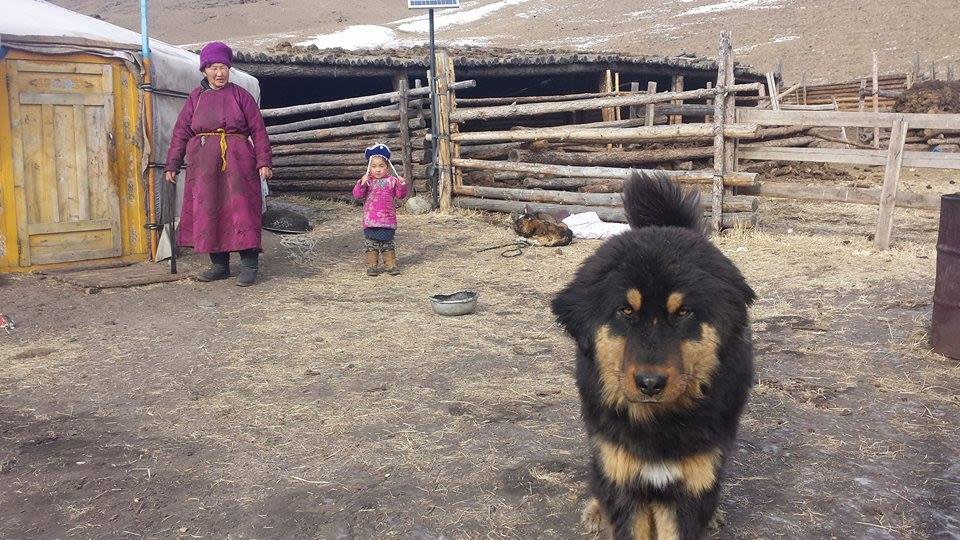
Photo: Mongolian Bankhar Dog Project
But even though snow leopards are fairly well tolerated, livestock losses can be financially devasting so it’s important to find ways to lessen the conflict between people and predators.
To protect their livestock during the day, for centuries the herders have enlisted the help of guard dogs. At night, the smaller animals such as sheep and goats are kept in corrals, when possible near buildings or in areas that are well lit, while larger animals like horses, cattle, and yaks are usually allowed to range freely.
The research team hoped to increase protection and reduce livestock loss, which would improve the attitude toward predators and hopefully reduce the chance of retaliatory killing by introducing a predator deterrent called a FoxLight.
From 2018 to 2020, these solar-powered flashing lights were installed. After dark, the multi-colored lights flash on and off, resembling a herder patrolling with a flashlight, which keeps predators away. The early data was encouraging, showing that where they were used there were no further attacks by snow leopards or wolves.
As part of the study, camera traps were also set up to record any encounters that snow leopards and wolves had with the FoxLights.
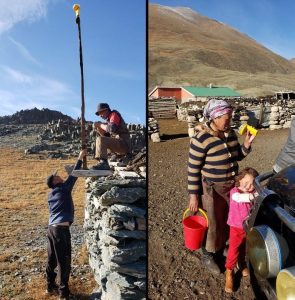

Photos: Claudio Augugliaro
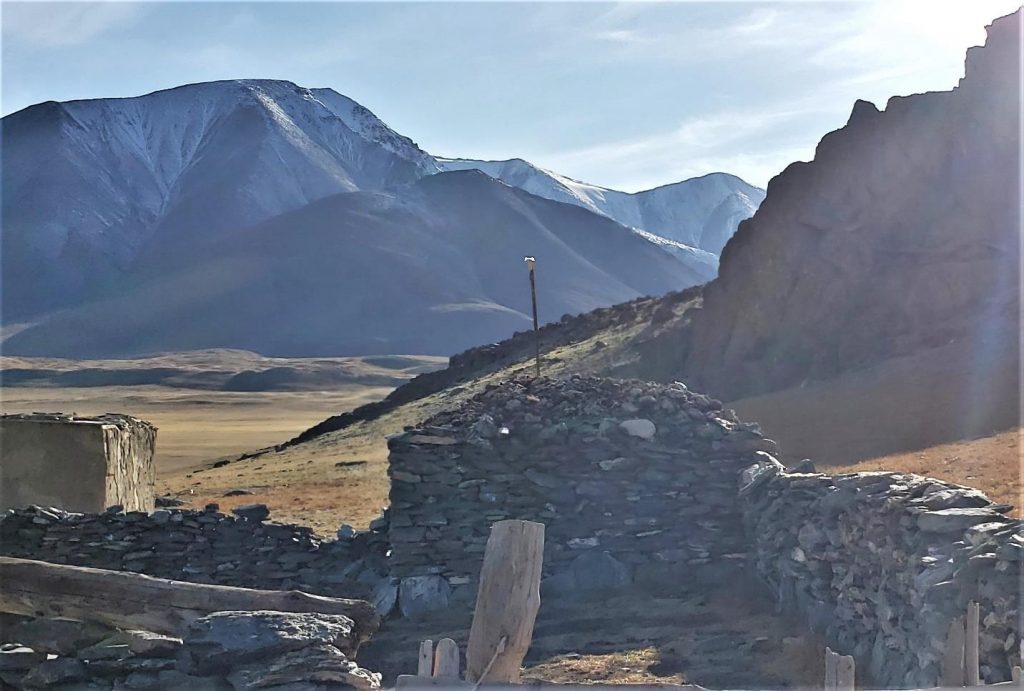
Photo: Claudio Augugliaro

